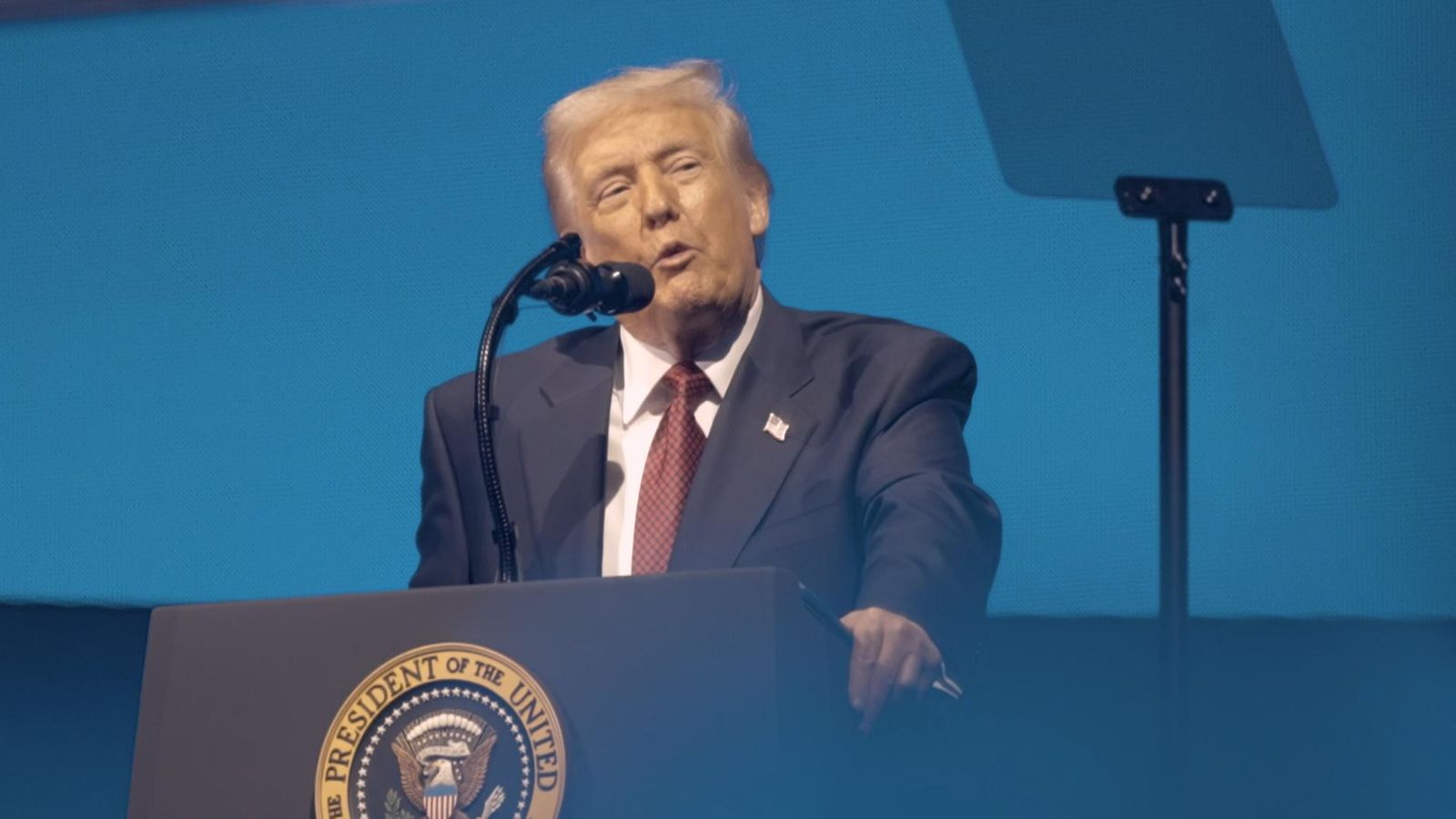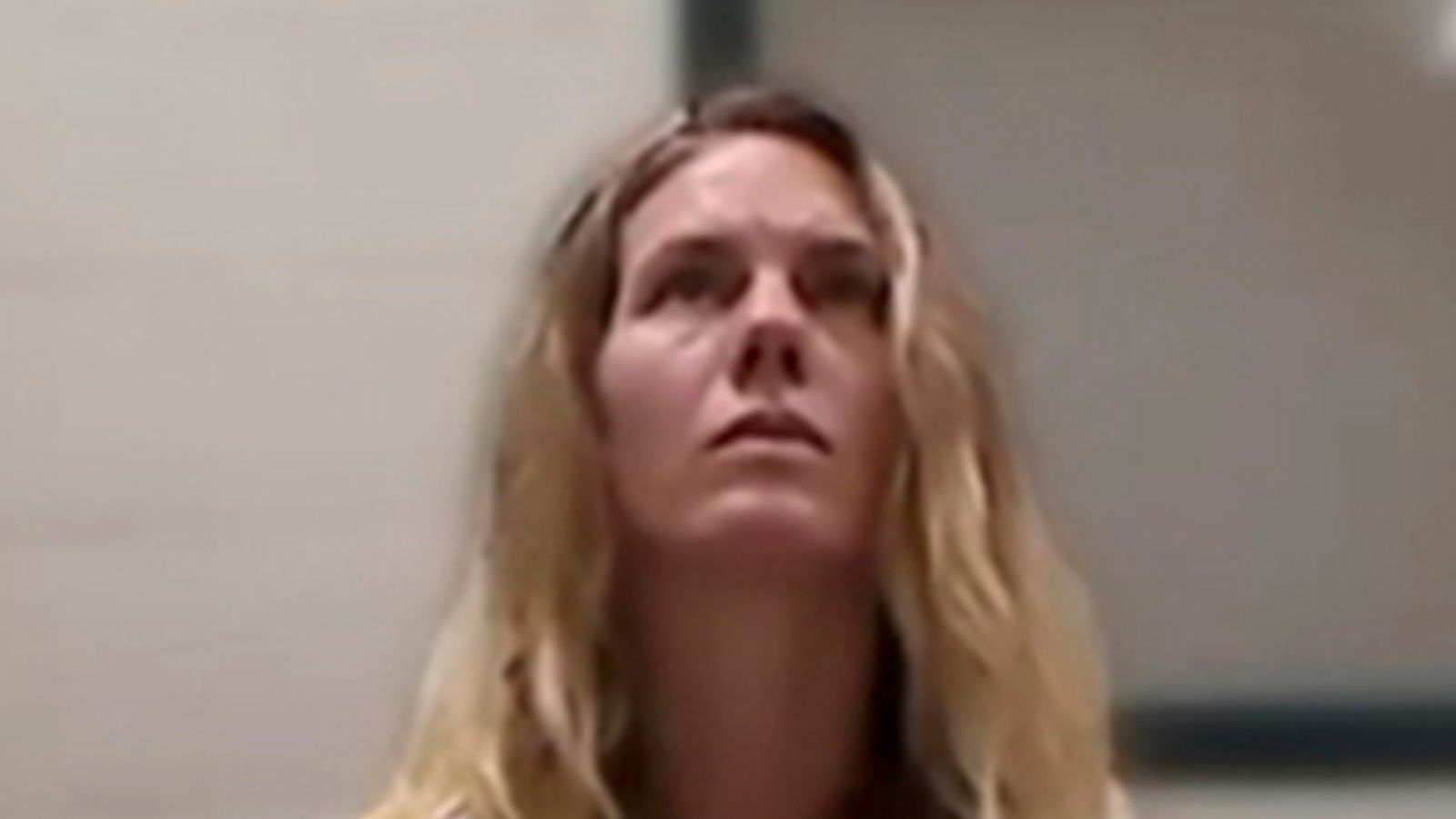A row of colourful family houses with picket fence gardens and a junk yard overlook the site of one of the most controversial chapters in recent American history.
Weeds and vines are now wrapped around the rings of barbed wire, the wooden watchtowers are decaying and signs warning of a restricted area are torn in half.
This is the site of the old Camp X-Ray at Guantanamo Bay.
Images of men in orange jumpsuits, shackled, blindfolded and kneeling in outdoor cages in oppressive heat are what most people around the world still associate with Guantanamo.
This part of the detention facility has long since been closed down although it can’t be destroyed because of ongoing criminal investigations.
But what happened here still casts a dark shadow over this American Naval base, which existed for almost a century before 9/11 but is now synonymous with torture and inhumane treatment.
The first detainees captured in the early days of the War on Terror – suspected terrorists – were brought to Camp X-Ray in January 2002 and it was only ever intended to be a temporary site.
But a series of reports since then have revealed what unfolded here and techniques used during interrogation, including beatings, waterboarding and other forms of torture.
No journalists had been allowed into Guantanamo Bay for the past 500 days because of the coronavirus pandemic so we didn’t know quite what to expect arriving at Joint Base Andrews (JBA) military terminal two days earlier for the flight down to Cuba.
JBA is half-an-hour drive outside Washington DC and is used by the military and the president and vice president.
On the day we depart Kamala Harris is flying to Michigan so the air strip is closed for half-an-hour for security reasons.
We had been warned ahead of time that the rules dictating how journalists operate in Guantanamo are incredibly restrictive.
At all times when moving around the base we’re accompanied by an escort and all our photographs and videos have to pass a security inspection to make sure they don’t reveal any classified sites or information.
One little corner of Cuba, around 45 square miles, has been an American Naval base since 1903, but for the past two decades it’s been home to the most costly and controversial prison on Earth.
For the 5,500 people residing here, everyday life is a world removed from the detention centre beyond the hills on the outskirts of the downtown area.
There is a McDonalds, an Irish bar, an outdoor cinema and a bowling alley.
The new boss of the naval base, Captain Samuel White, wants to convey that Guantanamo is more than a prison camp.
“This installation has been in existence for over 100 years. The exposure it received based on the detention facility is understandable, but it’s not the sole function of this installation,” he said.
We’re not allowed to film, or even see, the current detention centre but it costs the American people around £10m every year for each of the 39 prisoners who remain at Guantanamo.
There have been 780 detainees held here since 2002 but only eight have been convicted and four have had those convictions overturned.
Many have been waiting more than 15 years for a trial.
We’re here for a pre-trial hearing of Abdul Hadi al Iraqi, who says his real name is Nashwan al-Tamir.
He’s charged with being an al Qaeda commander in Afghanistan, accused of being involved in the planning or financing of insurgent attacks that have resulted in multiple deaths.
The judicial process takes place not in the American federal system as many think it should, but at Camp Justice, an area of Guantanamo Bay surrounded by sniper netting and barbed wire, overseen by a military judge.
Mr Hadi has been held at Guantanamo since 2007 and was in CIA custody before that, but his trial still hasn’t started yet.
His case has now been presided over by four different judges and several defenders, an experience which typifies a judicial process many say isn’t fit for purpose.
His current defence lawyer, Susan Hensler, says the withdrawal of US troops from Afghanistan should mean the permanent closure of Guantanamo Bay detention facility and the repatriation of Mr Hadi, an Iraqi national and Afghani citizen.
“This case is essentially the litigation of the war in Afghanistan and the war in Afghanistan is now over,” she says. “President Biden told us that last week.
“The United States entered into a peace agreement with the Taliban a year-and-a-half ago and certainly at this point Guantanamo Bay shouldn’t be the only place the war in Afghanistan is being fought. My client should be released and sent home.”
Former President Barack Obama tried and failed to shut down Guantanamo and the Biden administration is now working quietly in the background to wind down the prison.
Former Guantanamo prosecutor Omar Ashmawy has switched sides and now believes the prison is an unacceptable legacy of the War on Terror.
“Fundamentally it was wrong to take people and place them in a cage and throw away the key. If there was ever a true intent to follow through with meaningful fair trials then that needed to happen quickly,” he said.
With the pre-trial hearing of the five suspects in the 9/11 case scheduled to continue later in the summer, there is no evidence of any imminent closure of Guantanamo.
As America’s ‘forever wars’ draw to a close, the last vestige of that conflict limps on.




